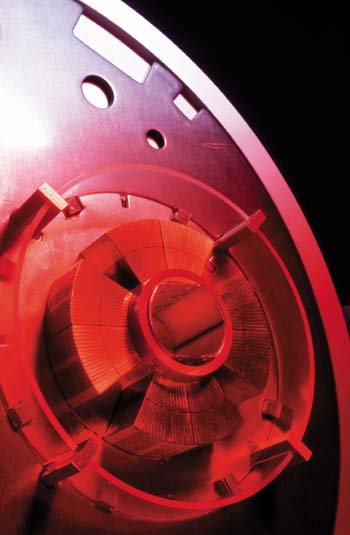Author
Array
(
[0] => linkedin
[1] => facebook
[2] => twitter
[3] => google-plus
[4] => youtube
)
Array
(
[0] => linkedin
[1] => facebook
[2] => twitter
[3] => google-plus
[4] => youtube
)
Array
(
[0] => linkedin
[1] => facebook
[2] => twitter
[3] => google-plus
[4] => youtube
)
Array
(
[0] => linkedin
[1] => facebook
[2] => twitter
[3] => google-plus
[4] => youtube
)
Array
(
[0] => linkedin
[1] => facebook
[2] => twitter
[3] => google-plus
[4] => youtube
)
No Author
Author archive
 Read article: Physics and archaeology
Read article: Physics and archaeology
Physics-based techniques play a crucial role in helping archaeologists to unravel the history of our ancestors' lives and reveal previously undiscovered sites without the need to excavate
 Read article: CERN prepares for the LHC and beyond
Read article: CERN prepares for the LHC and beyond
The phrase "needle in a haystack" is often used to describe CERN
 Read article: Cosmic rays: an in-flight hazard?
Read article: Cosmic rays: an in-flight hazard?
When Victor Hess discovered cosmic radiation almost 90 years ago, he did so in manned balloon flights that reached altitudes of up to 5 km in the Earth’s atmosphere. This was only a few years after the Wright brothers’ first flight and neither they nor Hess are likely to have thought that, by the year […]

Most materials only become superconducting when they are cooled to low temperatures. In this state the electrons inside the material overcome their natural repulsion and travel through the material in pairs. It has long been suspected that if the surface of a material was doped with enough electrons, the electrons would be pulled into the […]

The New York conference is intended to specify a timetable for all the main nuclear powers – China, France, Russia, the UK and the US – to abandon their nuclear weapon stockpiles. Delegates will also discuss ways to curb the production of weapons-grade fissile material and promote nuclear non-proliferation among the other states. But many […]

Quantized electrical conductance was confirmed in experiments with very narrow conducting wires in the late 1980s. The electrons move through the wire along quantum channels, each of which contributes a quantum unit of 2e2/h to the conductance, where e is the charge on the electron and h is the Planck constant. As the voltage difference […]
 Read article: The universe is flat – official
Read article: The universe is flat – official
All the matter and radiation in the universe was created by the big bang. The radiation stopped interacting with the matter about 300,000 years later – when the universe had cooled down enough for electrons and protons to form hydrogen atoms. The fact that the CMB has a perfect black-body spectrum with a temperature of […]

Fundamental physics is a new activity for ESA, although it has ambitious plans to launch LISA, a set of three spacecraft that would detect gravitational waves. It is also considering proposals to test the equivalence of inertial mass and gravitational mass. The other main areas of overlap discussed at the meeting were cosmology, neutrinos, dark […]
 Read article: Hubble prepares for the next ten years
Read article: Hubble prepares for the next ten years
Recently a “second decade” working group looked at the future of the billion-dollar telescope, which is funded by NASA and the European Space Agency. After ten years in orbit, what more can Hubble do? “A lot of little science has been explored with relatively short observation periods,” says Ethan Schreier, assistant director at the STScI, […]
 Read article: The physics of a spinning coin
Read article: The physics of a spinning coin
Moffatt became interested in the problem while looking for Christmas presents for his grandchildren. “I came across the toy in a mail order catalogue and thought it sounded interesting,” he says. After playing with the toy he became intrigued with the physics behind Euler’s disk. “The disk is continually losing energy throughout the process,” he […]
Copyright © 2025 by IOP Publishing Ltd and individual contributors
 Read article: Physics and archaeology
Read article: Physics and archaeology





